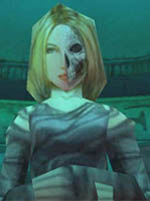I’ve recently started playing old gems, classics, in an effort to further my game design knowledge, ideas and culture. The games I have chosen are completely new to me. It is truly interesting to delve into very old titles, especially when you remove the nostalgia factor. Here I write my thoughts, impressions and lessons learned from some of these games.
My criticism is not based on history, even though I can’t help myself at being impressed by the tech cheats that were used at the time. I analyse the gameplay elements, 3C and interesting aspects as if the game was released today. I cannot unlearn and forget the last decade of gaming. Without further ado, here are my thoughts on Legacy of Kain: Soul Reaver as released on the Sony PlayStation (PSX).
The Good
- The story is very compelling, amazingly interesting and I cannot help myself to pursue it. My imagination is completely active and I am literally devouring the lore.
- There are no loading times! Even by todays standard, this is amazing. The engine uses streaming tech to achieve this feature and it truly keeps you immersed in the environment. Bethesda titles have something to learn here ;)
- Even though the story is deep, the gameplay stays light. The combat is quite easy, supplemented and dominated by puzzle solving. It makes for good light gameplay sessions.
- The plane switching is pretty sweet and lessens the pain of dying.
- The character looks badass and mysterious.
- The game is hard. I’ve actually had to look at a walkthrough for the first time in many years.
The Bad
It is important to note I am not insulting the developers. They had to work with crazy design constraints. For example, many Playstation owners didn’t have a Dual Shock controller (myself included). Furthermore, 3D was still relatively young, which meant design was in great flux. I wish to identify mistakes made and learn from them.
- The 3C; Character, Controls, Camera, are complicated and hard and I don’t like them.
- Character: The player has a gravity factor of approximately 1 gazillion! You end up jumping too far all the time, or ridiculously miss jumps that should have been easy. The character turns on a dime. I like the run speed, but you often fall off ledges.
- Controls: Right Trigger and Left Trigger for rotating the camera is painful. I believe a Left-Stick “look mode” would have solved most my gripes. Pressing the jump button quickly doesn’t do a full jump, I missed many jumps because of this.
- Camera: The camera itself doesn’t really follow the character as much as I’d wish. I figured out quite late in the game that there was a look mode (thank god). However, this look-mode (RT+LT) is painful to use at it doesn’t give you 360 degree movement. You can only rotate 180 degrees from the direction your character was facing when initiated. A Left Stick approach would solve this. The camera goes berserk in pathways. Finally, it is hard to see where you are supposed to go, making the game puzzles artificially harder.
- The combat is quite boring and tedious, though the “R1 fence mode” is a great idea.
- When switching plane, it is annoying to wait for your “energy” to refill if there are no souls to devour. This is another design concept that doesn’t add value for the player, simply slowing him down.
- The game is hard. I’ve actually had to look at a walkthrough for the first time in many years.
What I’ve Learned
-
In some very narrow pathways, the game puts you “on rails”, so to speak. The player only needs to press forward and the character will move and turn accordingly. This makes navigating those pathways a breeze and feels more cinematic. This is my favorite little detail in the game, and I wish it used it in all pathways.

-
[Tiny spoiler] I really like a female acolyte. This may be sexist, I am not sure about that, but it is honestly how I felt. When the character appeared, I was instantly receptive to her plea and state. I guess it evoked a soft spot inside me. It helped that the character wasn’t purely sexy, that she was half ugly and deformed.
-
Narration by a main character is not only a great way to deliver lore, but also makes the beginning tutorial enjoyable. It intertwines useful gameplay information with the story.
-
Fast arcady controllers are fun, but you need tweaks so the player does not end up frustrated.
-
Punch your player in the face with your story, right there in the first cutscene! Seriously, just go in and lay it all out. Make the main character’s motives and drivers super clear right at the start.
-
Make your puzzles hard, but make it clear when the player is expected to solve a puzzle. If not, the player may run around and in circles thinking he has missed something.
I am still playing the game. I am probably about halfway through. I may revisit this post and add a few more observations. Overall it has been a truly academic experience. There are little details, little techniques used in older games that will definitely be useful in my daily work. There is also a lot to learn from the mistakes, and much to unlearn from nostalgic memories.
